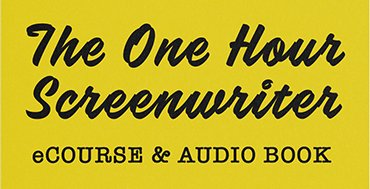Top Ten Writing Mistakes


A note about POV below– Even in a large ensemble drama or comedy there is someone who is “first among equals.” Make sure that person has a complete story arc and is driving the story for the other characters.
10) No Clear POV Character– Children tend to relate to the POV character in a story. This is the person they will root for. Make it clear right from the start whose story is being told. Even if you have two main characters (twins, for example), you need to pick just one of these kids to be your POV character. And, it should go without saying, when writing for children, make sure your POV character IS a kid – even if Grandma has a big part in your story.
9) Multiple Points of View– Unlike stories for adults, stories for children are generally told from only one POV. It isn’t difficult to maintain a single point of view once you get the hang of it. Just remember– if you are “showing” everything from your main character’s point of view, then he or she has to be present for everything that happens. I see stories all the time where the POV character suddenly leaves the room. Yikes! If your POV character wasn’t there to see or hear what went on, then we can’t see or hear it either.
8) Telling instead of Showing– Read a good story and chances are there is a lot of action and dialogue (showing) with minimal stretches of straight narrative (telling). Too much narrative and the story sounds like a summary. Readers don’t want a summary. They want scenes with action and dialogue that make them feel they are actually experiencing what is going on. So “show” as much as possible of your story through action and dialogue.
7) Overuse of Adjectives, Adverbs, and Other Unnecessary Words– Do you really need to say someone “whispered quietly” Or “shouted loudly” Or, my favorite– she “nodded her head”? What else could she nod? Or, she “shrugged her shoulders”– she certainly wouldn’t shrug her foot!
6) Dialogue That is Not Punctuated Properly– Get a grammar book to learn how to punctuate dialogue properly. But, most importantly, remember to change paragraphs each time the speaker changes. I read manuscripts all the time where three or four characters are speaking, yet the paragraph never changes. Just imagine how confusing that is to the reader!
5) Long Timeframes– I know Harry Potter takes place over several years. But, the story also takes place through several books. Most children’s writers start out writing stories for children’s magazines or they want to write picture books for very young children. Either way, the timeframe in these stories should be rather short– a couple of hours or a day or two. If your story takes place over a couple of weeks or (gulp!) a couple of years, then you need to shorten the timeframe.
4) No Narrative “Hook” for the Reader– I know what you’re asking– “What is a narrative hook?” Well, that’s simple. It’s just an opening sentence or two that “hooks” the reader and makes him or her want to continue reading to find out what happens.
3) Dialogue That Doesn’t Sound Real– Listen to any child or teenager and you’ll find out that much of what kids and teens say (at least to each other) tends to sound like a series of grunts. So don’t have the child or teen in your story use words like “shall,” or never use contractions. If you do, the dialogue will sound too formal and your work will not have a child’s or teen’s voice.
2) Adults Who Step In to Save the Day for the Child– I know what you’re thinking. Parents and other well-meaning adults DO step in all the time to save the day for kids. So why can’t they do it in stories for children? The answer to that is– because children don’t want to read stories like that. Stories for children have strong children (or children who eventually become strong throughout the course of the story) as characters. This empowers the children who read these stories. They figure, if the POV character can solve his own problems then maybe they can too.
Now. Drum roll here.
The number one mistake new writers make in their stories for children is
1) No real conflict– There’s no story problem. Your POV character needs to face some big problem right at the start of the story. Then, he or she needs to struggle and struggle with this problem as he/she tries to solve it. That is, things need to keep getting worse and worse until finally the POV character is able to solve the problem (or at least resolve it) and change or grow somehow in the process. Without a story problem you have what editors like to call “an incident,” and editors don’t publish incidents. They publish stories.
You can read the whole post here– http://www.absolutewrite.com/specialty_writing/top_ten.htm



Create a visual map for a character’s emotional journey. Pull stories from character rather from rote story structure beats. Some of the largest international media companies, use this in story and character development.


A clear concise guide for writers and producers to have by their side as they embark on a project. It gives a really vital reminder of what is key for story success.

No comment yet, add your voice below!